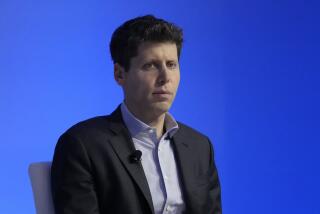How smart is $1 billion for a smartphone app?
FacebookŌĆÖs decision to pay $1 billion in stock and cash to buy Instagram, a company with one product and no revenue, inspired many people to consider a new career writing smartphone applications. Others wondered whether the purchase was just the latest sign of a new dot-com bubble, with the mania this time inspired by social technology and mobile apps. The truth is that the deal is more a reflection of the evolving economics of the Internet than a sign that valuations have lost all connection to reality.
Instagram is an app for iPhones and Android-based smartphones that lets people jazz up their photos (making them look like old Polaroids, for example) and share them with other Instagram users and websites. Launched a year and a half ago, it became the fastest-growing social network not named Facebook, attracting more than 30 million users, many of them young people habituated to documenting their lives through a smartphoneŌĆÖs camera lens.
Given that one of the main reasons people use Facebook is to share photos (by one estimate, 20% of the photos taken last year will eventually end up on the social network), itŌĆÖs easy to see why Facebook Chief Executive Mark Zuckerberg would regard Instagram as a threat. Spending $1 billion to take out that competitor and absorb its superior technology makes a certain amount of sense for his company, which has an estimated market value 100 times as great.
In doing so, however, Facebook inflated the price of a host of other companies with popular social apps but not much in the way of revenue, such as Twitter and Pinterest. Yet that may not be as troublesome as in the late 1990s, when companies went public without viable business models only to crash spectacularly when the market tanked. In the intervening years, companies such as YouTube and Facebook have proved that there is a real market for social media or content that can be shared online. And advertisers are increasingly following consumers to the apps and sites where theyŌĆÖre spending much of their time.
Instagram users devote hours to it every month, uploading 5 million photos daily. More important, they interact with the pictures shared, offering more than 650 comments or ratings per second. That kind of attention is what advertisers call a high level of engagement, and theyŌĆÖre eager to be part of it. Internet users, meanwhile, have shown that theyŌĆÖre willing to pay for premium versions of the free apps they love ŌĆö witness the success of RovioŌĆÖs Angry Birds and SpotifyŌĆÖs subscription music service.
ItŌĆÖs an open question whether Instagram would have figured out how to monetize the app without driving off users, or whether Facebook will. But Instagram doesnŌĆÖt look anything like Pets.com, even at $1 billion.
More to Read
A cure for the common opinion
Get thought-provoking perspectives with our weekly newsletter.
You may occasionally receive promotional content from the Los Angeles Times.










